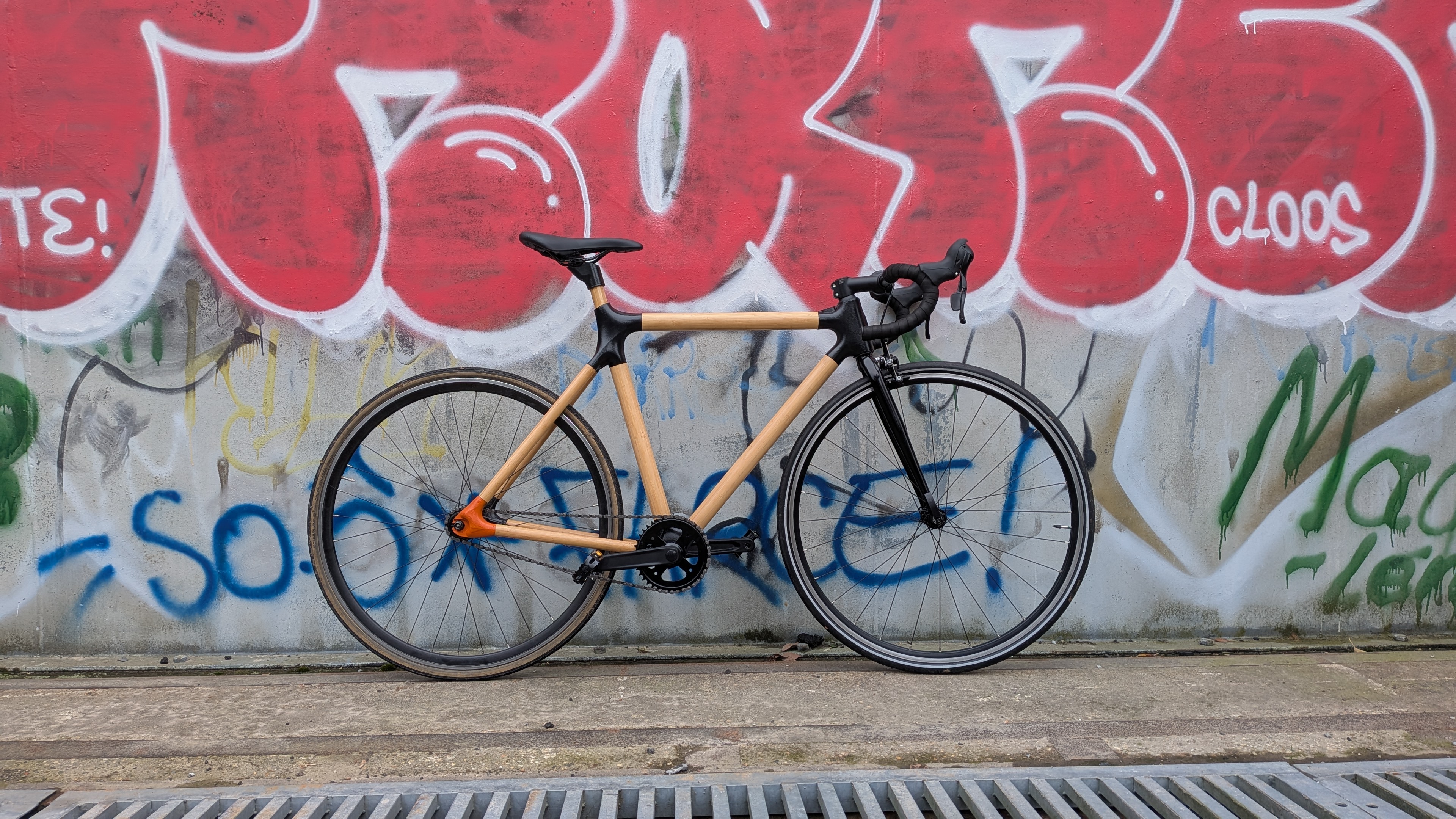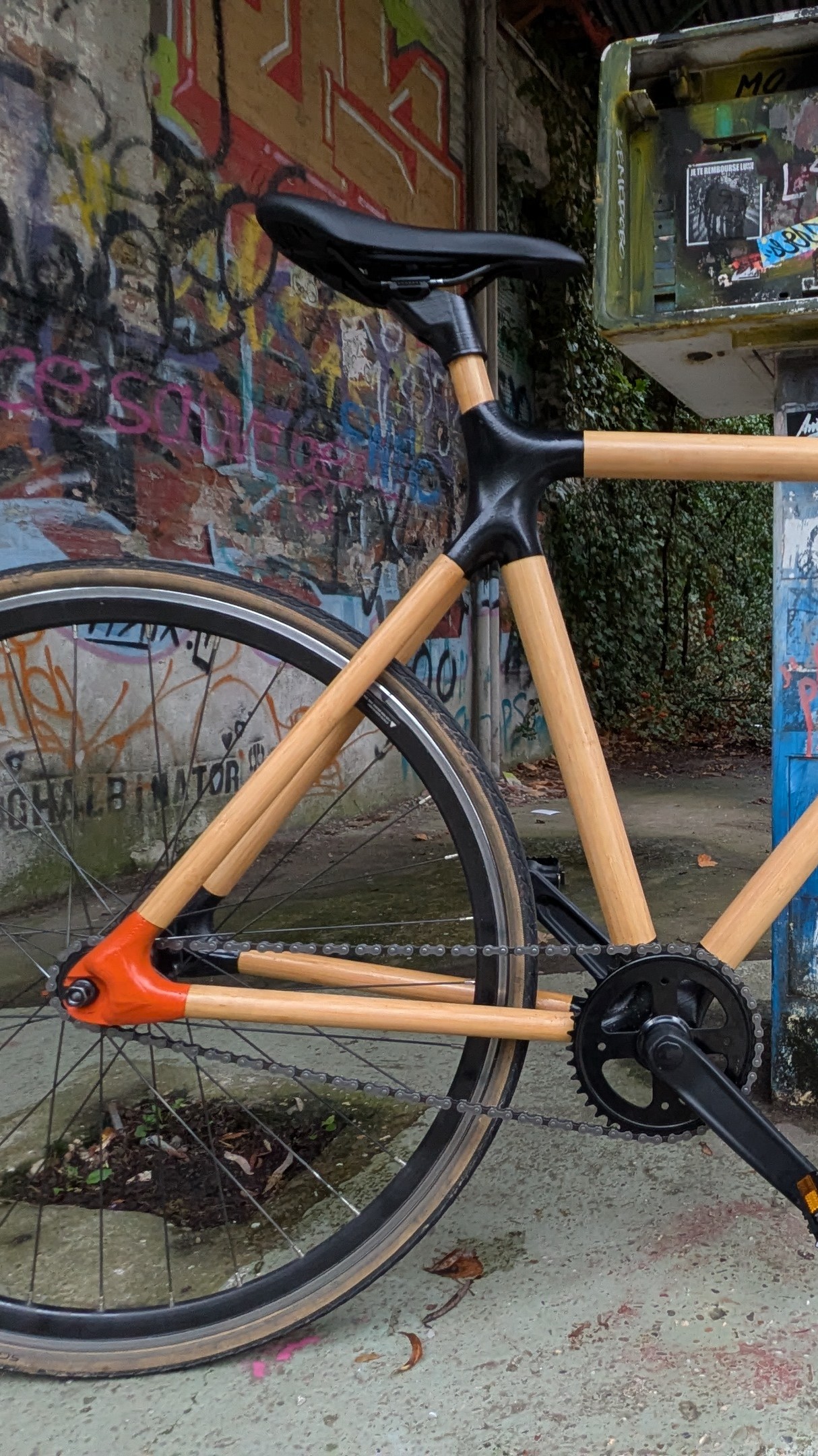A New Chapter in Bicycle Development
OpenFrame is an experimental project exploring what becomes possible when natural materials and modern fabrication methods are combined with a transparent, iterative approach.
The goal is not to release a finished bicycle into the world, but to develop and validate a method: a modular frame system built from bamboo veneer tubes joined with 3D-printed PA12-CF lugs, evolving step by step through testing, data, and refinement.
This platform blends digital precision with traditional craft. Every version, failure, improvement, and measurement is documented so the entire development stays open, traceable, and repeatable.
You can follow the journey here on the devlog or through Instagram — both updated as new iterations and test results come in.
Why Bamboo?
Bamboo is lightweight, renewable, and structurally efficient.
The Moso N-Vision veneer tubes used in this project offer:
- a strong strength-to-weight ratio
- sustainable sourcing
- warm, unique aesthetics
- predictable workability for custom frames Frames use 25, 30, and 40 mm tubes depending on load paths and frame position.
Why 3D Printing?
The lugs are printed in PA12-CF (carbon-reinforced nylon) using the Creality K2 Max.
This allows:
- geometric freedom for complex joints
- fast iteration from test to redesign
- customizable geometry for different frame sizes
- fine-tuning of strength through print orientation, cooling strategy, and annealing
These printed lugs are development prototypes, not certified structural components.

Design Philosophy
1. Open & Modular
OpenFrame is not a single bike — it’s a system that can adapt to different geometries, materials, and use cases.
2. Transparent Iteration
All design steps are tracked in the devlog and structured within a PLM-inspired workflow:
- CAD skeleton models
- part numbering system
- material tests
- failure logs
- print settings
- cost overview
3. Hybrid Craft & Engineering
Bamboo brings warmth and natural variability.
Additive manufacturing brings precision, modularity, and adaptability.
Together they form a platform for hybrid innovation.
Technical Challenges
- Joint fit and tolerances
- Load paths, stress points, and directional layer adhesion
- Moisture sensitivity and creep in nylon composites
- Vibration, impact, and fatigue behaviour
- Protective coatings, epoxy sealing, and surface finishing
- Repeatability and standardization across iterations
These challenges are the core of the project — each one is tested and refined version by version.

Aesthetic Identity
The design aims for warm minimalism: organic lug transitions, clean geometry, and natural bamboo contrasted with matte black PA12-CF.
The frame is both functional and expressive, showing both the engineering and the craft that went into it.
Future Vision
OpenFrame is deliberately experimental, and the current prototypes are not intended for outdoor riding.
Safety and durability require controlled testing before any real-world use.
Because of this, the development is currently moving in two parallel directions:
1. Testing, Reinforcing, and Refining the Bamboo + PA12-CF Frame
This includes:
- structural tests
- joint-level stress analysis
- reinforcement strategies (fiberglass, carbon wrap, inserts)
- evaluating long-term fatigue
2. Creating a Dedicated Indoor Trainer Frame
A fully modular, bamboo + printed hybrid designed specifically for indoor smart trainers (e.g., Kickr Core).
This is a safe, stable environment without road impacts — a perfect domain to push the concept further while road-worthy development continues in parallel.
Over time, as test data accumulates, the outdoor frame will evolve toward a more robust, validated version.
Closing Thought
OpenFrame is not a finished product — it is a design journey, a research project, and an evolving method.
It explores how sustainable materials, digital fabrication, and open documentation can come together in a modern bicycle system.
Follow along as the project grows — step by step, test by test — and as the bamboo + printed hybrid finds its place, starting indoors on the trainer and slowly moving outward as the engineering matures.
This is open development in real time.